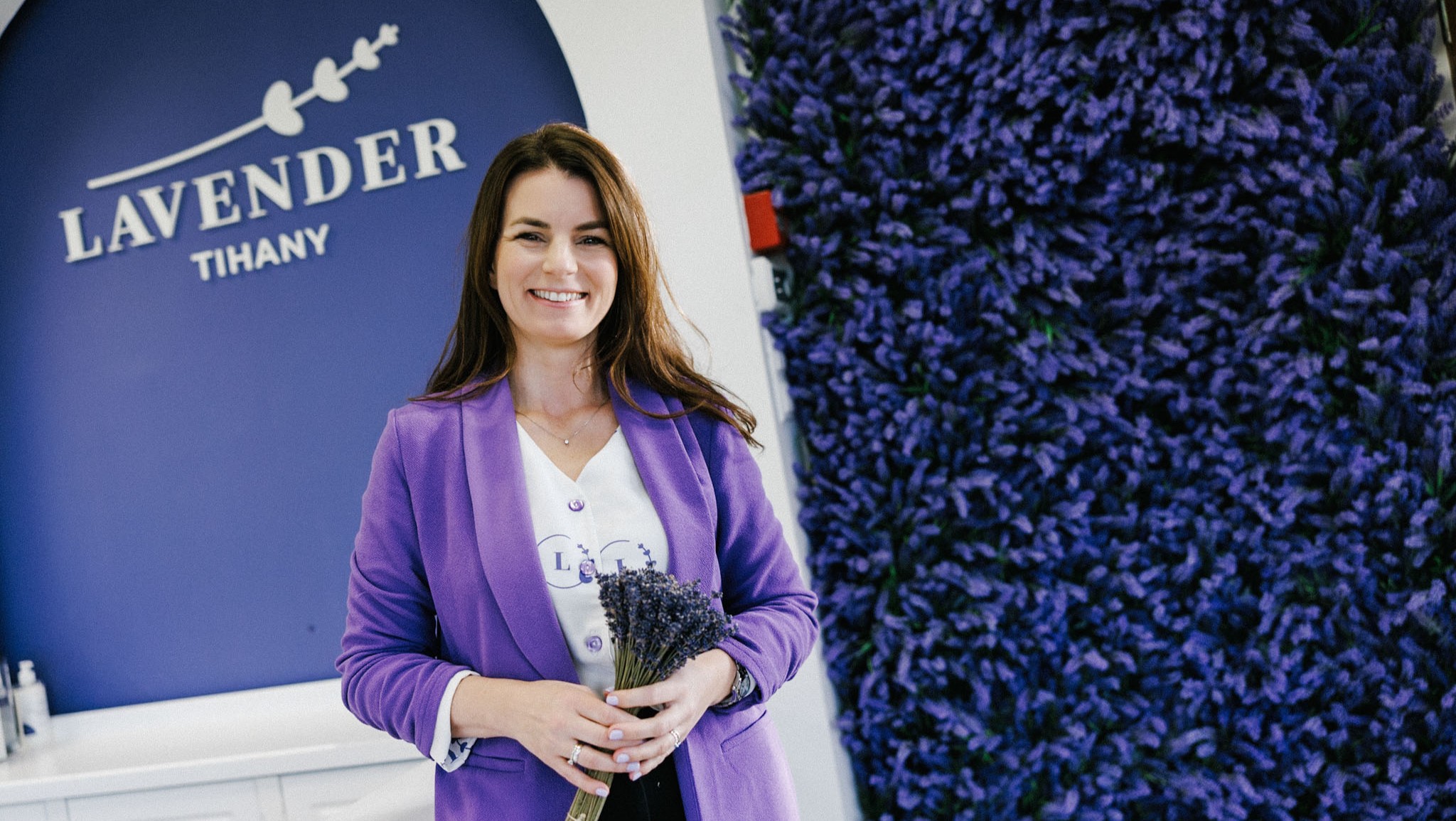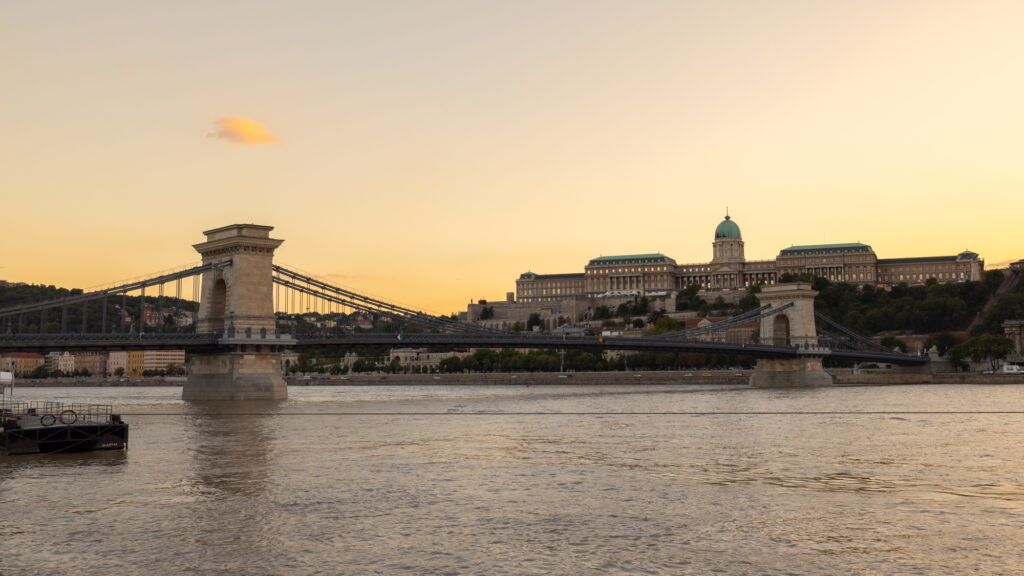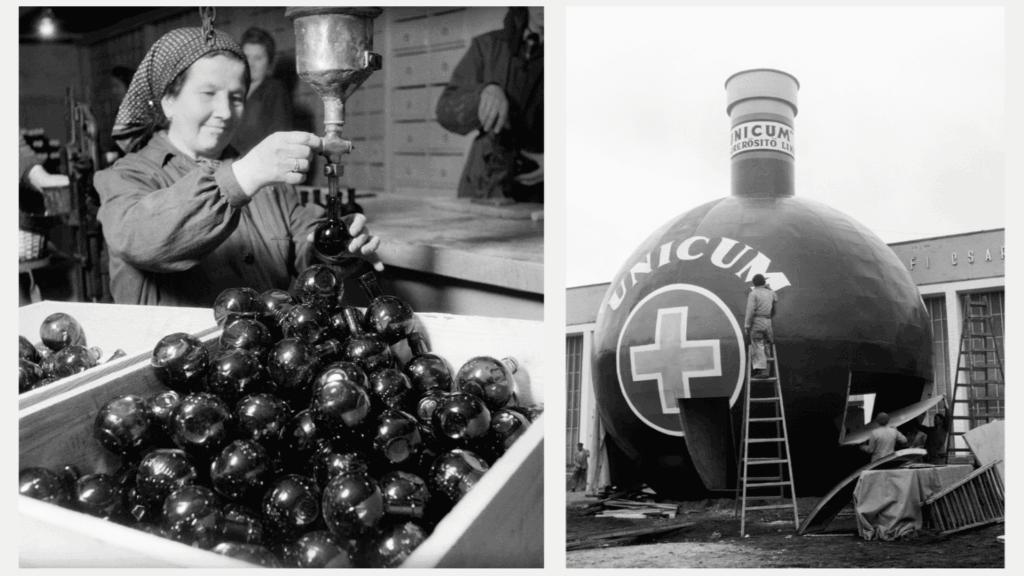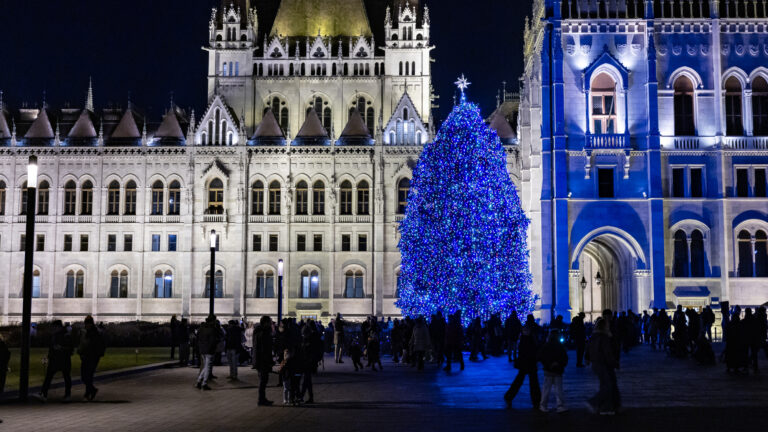The following is an adapted version of an article written by Anna Demeter, originally published in Hungarian in Magyar Krónika.
Tiny, bright purple flowers, precious oil. The history of lavender in Tihany began almost a hundred years ago, and thanks to a few dedicated individuals, it will continue into the future. Magyar Krónika spoke with Eszter Bittmann, managing director of Lavender Tihany, at the factory on the shore of Lake Belső about the peninsula’s iconic plant.
***
If you type ‘Tihany’ into a search engine, the word lavender pops up right after the sights, but perhaps the order is similar in everyday speech as well. Since when has it been like this?
In Tihany, we would like to think that when lavender is mentioned in Hungary, people immediately think of us, even though there are several lavender fields outside our region. However, large-scale cultivation is indeed associated with us first of all. Almost a hundred years ago, in 1926 Gyula Bittera, a herbalist and chemical engineer, brought the first plants from France and established a plantation in Tihany, on the gentle slopes of Lake Belső, as the Balaton Uplands region reminded him of the Provence fields. This is where the story begins.
A small peninsula with great potential?
Tihany is a gem. It is characterized by a special microclimate and volcanic soil, protected from the wind and bathed in sunshine. Looking out of the factory, we see Lake Belső, which lies slightly higher than Lake Balaton, and beyond the hills lies Lake Külső. This hilly landscape drains the water, so it does not soak the roots of the lavender. Back in the day, Gyula Bittera first rented land from the Benedictine abbey, and soon he was farming 30 to 40 hectares. Some of the ancient lavender he planted still blooms today on the hills below the Őrtorony lookout tower. In fact, the researcher set up his first distilleries a few metres from ours, so you can feel the ‘past of lavender’ up close. Few people know this, but the person who introduced the plant could have become world famous, as a foreign expert’s measurements revealed that the oil produced here was of better quality than that produced in France. In addition, distillation took place on a large scale, so after a while it was also sold overseas.
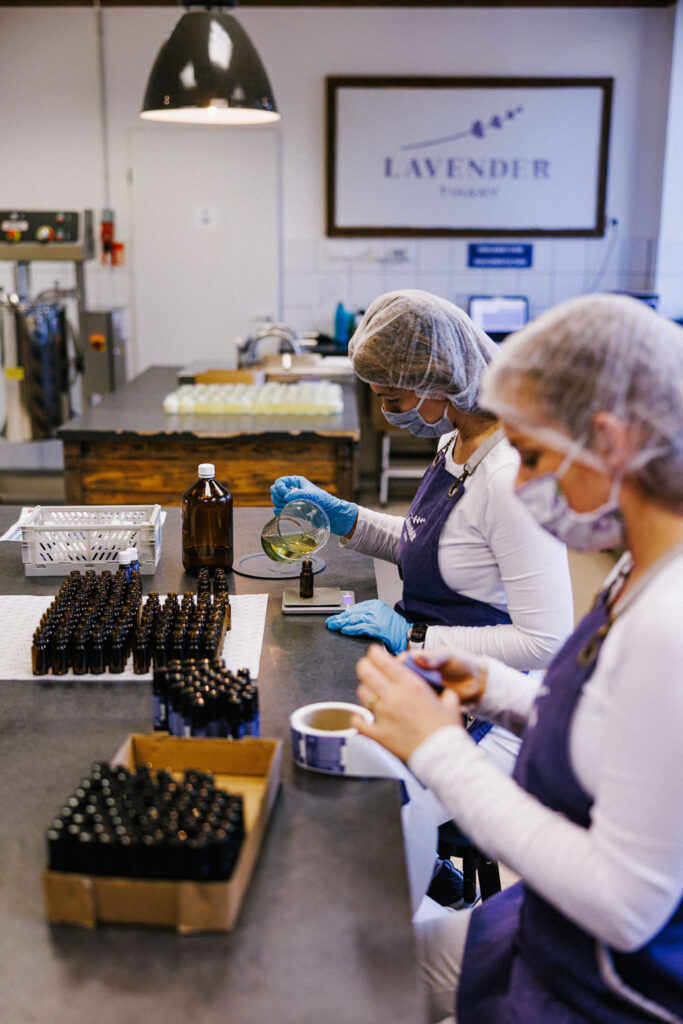
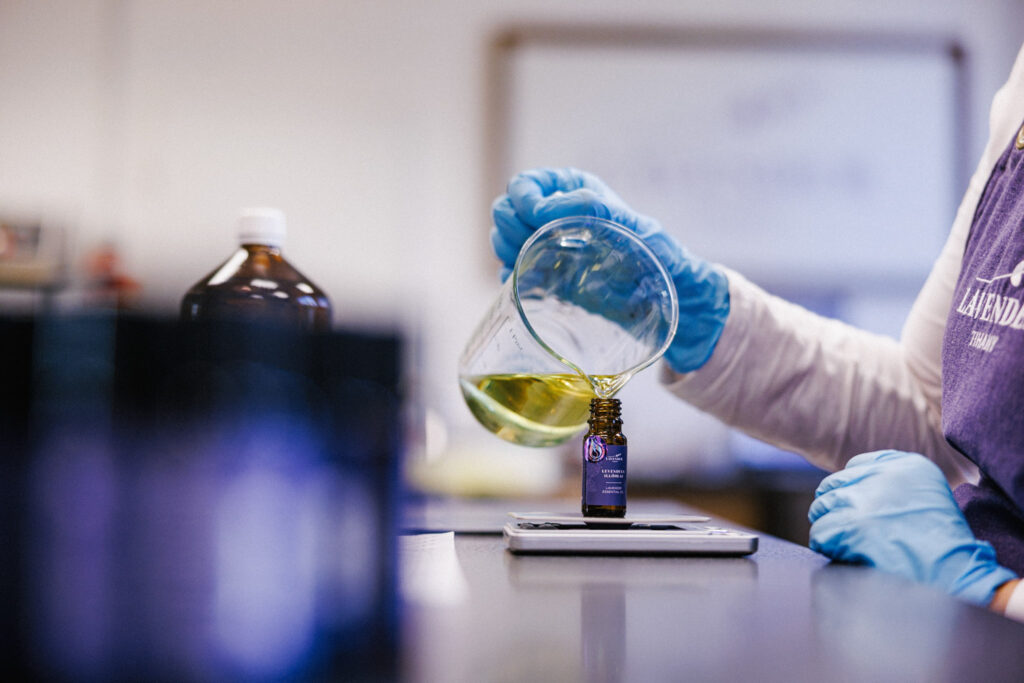
Then came nationalization…
From 1950 to 1995, lavender cultivation ceased in Tihany. The land was transferred to the Badacsony State Farm, which saw a future in viticulture. It sounds strange today, but as a resident of Balatonfüred, I didn’t see any lavender here until I was ten years old. Around the time of the regime change, the Zátonyi family from Győr started planting again, but there was no distillery in Tihany at the time.
Is this innovation already linked to the Bittmann siblings?
This is where we join the story. It is worth knowing that lavender must be distilled as quickly as possible after harvesting, as it continuously loses its fragrance. That is why it was particularly important to have a distillery nearby. Previously, the harvested plants were taken to Pannonhalma and Győr, but by the time they reached the cauldron, hours had passed. So, my brother Szilárd and I wanted to offer products that were truly locally made here.
‘Lavender must be distilled as quickly as possible after harvesting, as it continuously loses its fragrance’
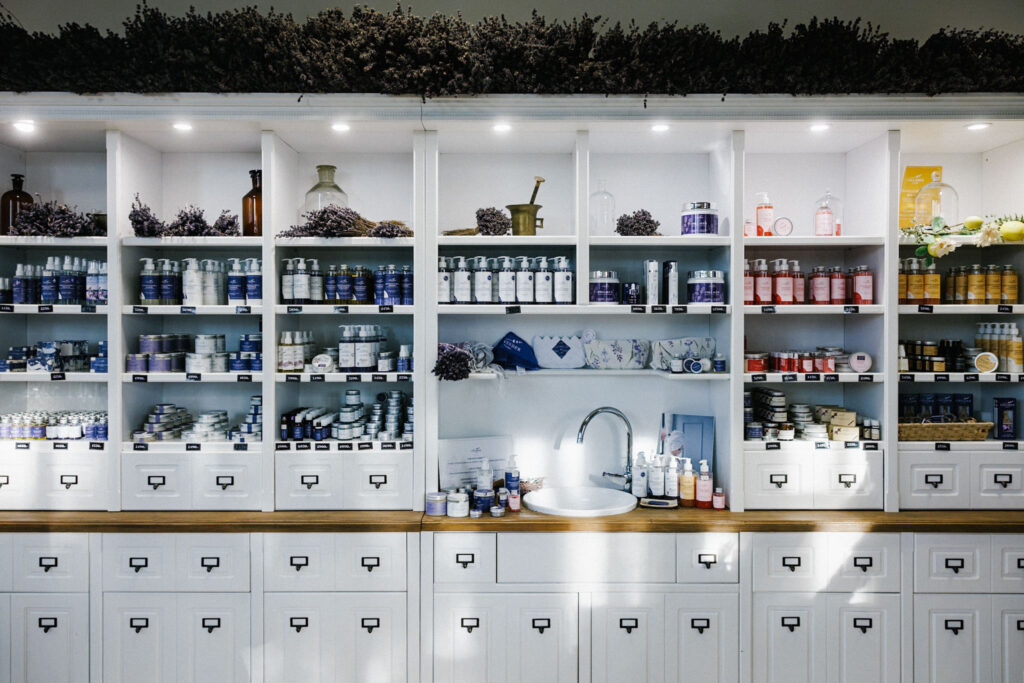
Your mother was also interested in the beneficial effects of lavender…
Our mother was a pharmacy assistant, and our father ran a restaurant on the peninsula. This is interesting because Szilárd became really successful in gastronomy, while I am more involved in Lavender Tihany. My mother started working with lavender after we were born. They experimented with some essential oil-based ointments at the pharmacy—she still has the recipe book to this day—and then she opened a souvenir shop. 40 years later, we are continuing what we saw them do. Szilárd opened his own shop ten years ago, but it only sold French, Italian, and Chinese lavender products. Customers rightly asked where the local products were.
And where were they?
The distillery and laboratory opened in 2019. We have been the operators since last year, and we are half-owners of the distillery, too. We introduced the ‘farm to home’ concept, which means that we grow lavender in Tihany, and we have also joined forces with local producers and family businesses, from whom we purchase oil and other raw materials. Plus, since we also operate as a rental distillery, anyone can bring their own lavender to us. This is how it slowly took its place in the local community.
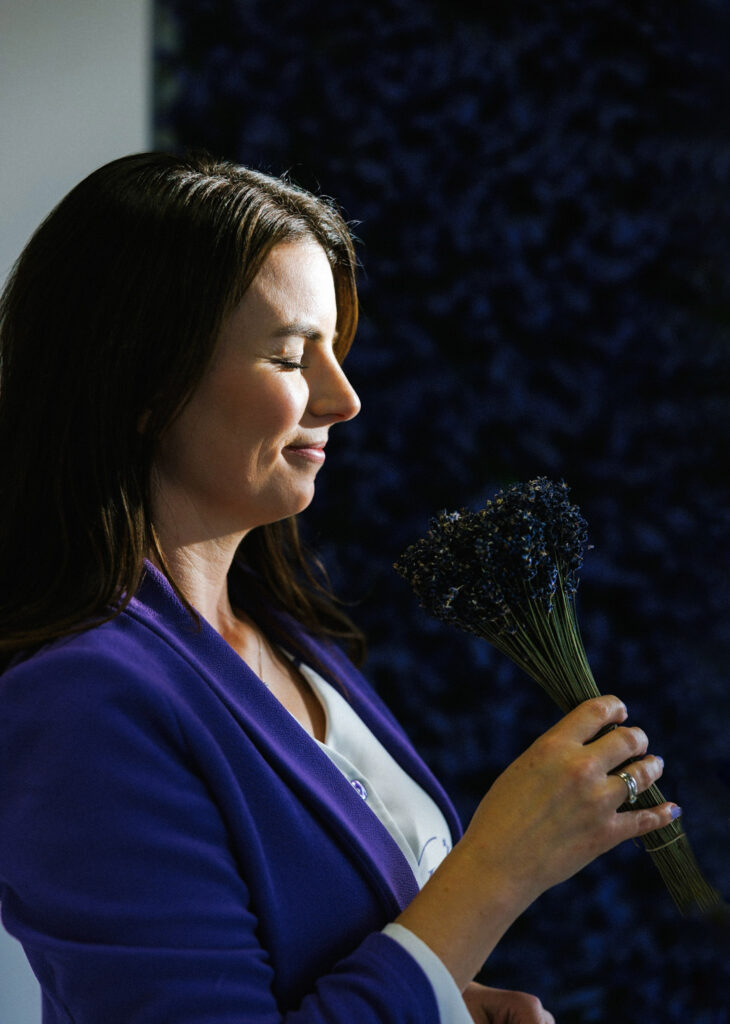
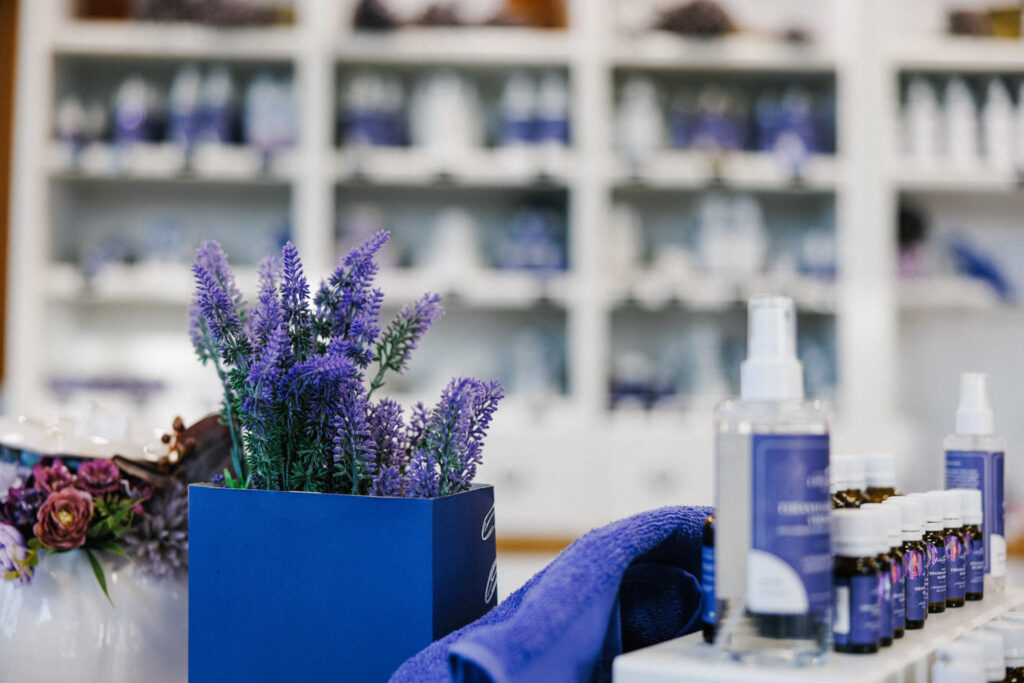
How did your role at Lavender Tihany come about?
I moved away from the area for a while. I graduated from Budapest with a degree in international relations, worked abroad, and my husband is also from the capital. Our son was one year old when my brother suggested the idea of a joint venture. It was a big decision. We wrote the plan in October, moved back to Balatonfüred, and launched the business in June.
Am I right in thinking that this was a different kind of purple haze?
I would be lying if I said it was easy, but in a way, it was still like a fairy tale. Everyone supported us wholeheartedly: my mother joined the business, my father cooked, and they still accompany us to presentations abroad. In the meantime, our little girl was born, now she’s in kindergarten, and our little boy is in school. They’re always present at harvest time, waiting for us to come home, asking: ‘Mom, did you sell a lot of lavender stuff today?’ And in the evenings, they ‘develop’ products in the bathtub.
What we haven’t talked about yet is what makes this herb so special.
If you open a book on medicinal herbs at the entry for lavender, the first sentence will probably mention its versatility. Lavender comes from the Latin word lavare, meaning ‘to wash’, because it is particularly good at cleansing and disinfecting. However, its most notable effect comes from its calming, anti-inflammatory, and antispasmodic properties, which we need in all areas of our lives. Thus, it can be used to treat several conditions, from muscle pain to skin irritation and headaches, and it also promotes restful sleep. In addition, it is also used in gastronomy, as it creates unique flavours.
‘Its most notable effect comes from its calming, anti-inflammatory, and antispasmodic properties, which we need in all areas of our lives’
Upon entering the factory, we see two large machines sunk into the ground beyond the glass wall. How does the oil get into the bottles from there?
These two thousand-litre cauldrons are sunk into the ground to make it easier to load the plants into them, as each cauldron can hold 350 kilograms of lavender. The distillation process is supervised by the distillation master after the harvest, in June and July. Once the lavender is in the pot, the lid is closed, water vapor distillation begins through the pipe, and then the steam rising from the bottom of the cauldron causes the lavender to burst. After that, the steam arrives in the condenser. Outside is our water-cooling tower, which helps us reach a temperature of 40 degrees, and then the water and oil are separated in the separator. The oil is filtered once, but we will only use it later, around November, as after distillation, we ventilate it, transfuse it, and allow time for it to mature, just like wine. The aforementioned amount of lavender yields only two to two and a half litres of special, slightly sweet oil.
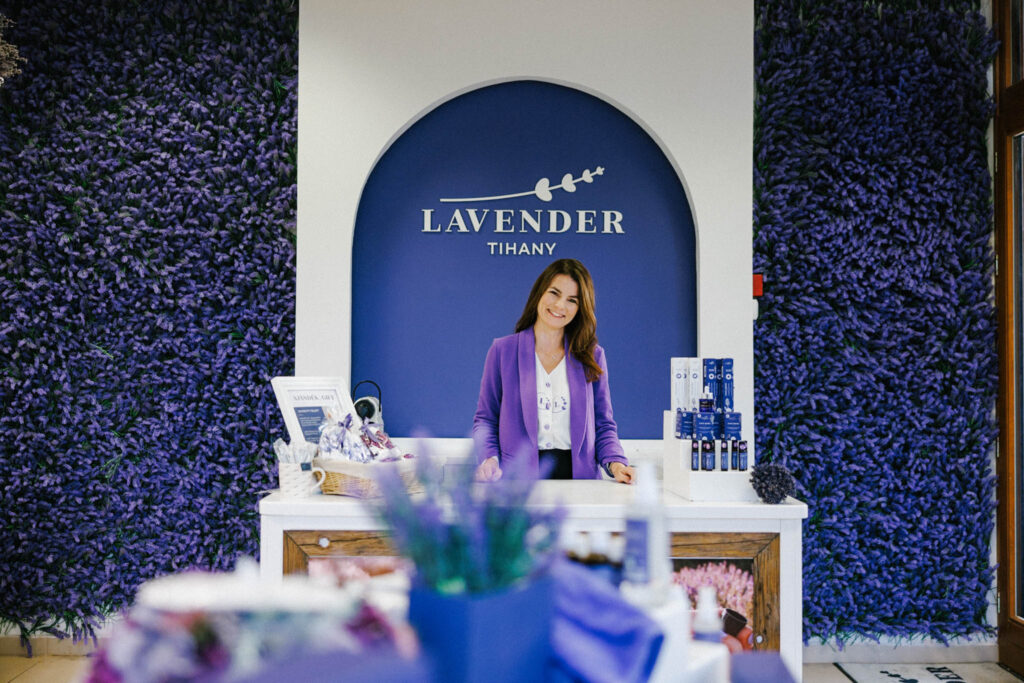
Does the fact that you work in a showroom, where anyone can see the production process, affect your work?
Perhaps this is why our work is much more complex than we first thought, but it is also more enjoyable. There are only 12 of us in the team, and apart from our delivery driver and my brother, we are all women. It feels good that our lavender oil now has a trademark, meaning that it comes from the Tihany soil to the distillery. It’s no secret that my next dream is to get it into the Hungarikum category. I would like as many people as possible to visit Tihany and get to know what life is like here.
Can this feeling be summarized for those who are not yet familiar with it?
For me, for us, for the locals, Lake Balaton has four seasons. After many years, last year we were finally able to skate on Lake Belső with the children again, just like I used to do as a child with my parents. Tihany somehow brings peace in every season: it is a joy to see Balaton, to walk around the area, to eat delicious food together, and of course, June gives the biggest joy when you can smell the scent of lavender everywhere. This peninsula is a gem that cannot be explored enough.
Related articles:
Click here to read the original article.

